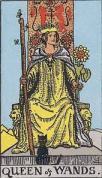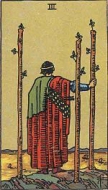Thou know’st that all my fortunes are at sea…
(Antonio, Act 1, scene 1, The Merchant of Venice, William Shakespeare)
“At sea” turns out to be a vital point in The Merchant of Venice. To help finance his friend Bassanio’s courtship of Portia, the merchant Antonio borrows money, gambling on the potential gains from his various ventures. In fact,
…he hath an argosy bound to Tripolis, another to the Indies; … a third at Mexico, a fourth for England… But ships are but boards, sailors but men…”
(Shylock, Act 1, scene 3)
Shylock loans Antonio the money. Then, in subsequent scenes, we learn Antonio’s ships have all been lost at sea. Antonio is ruined and Shylock seeks to claim the macabre bond that Antonio agreed to, if the loan couldn’t be repaid: a pound of Antonio’s own flesh.
Antonio and Shylock ultimately land in court, with the latter ready to cut away a pound of the merchant’s flesh, when a young lawyer’s reasoned arguments reverse the decision against Shylock, saving Antonio’s life. The lawyer is actually Portia, in male disguise.
Where does the Tarot come in? Pamela Colman Smith, the artist of the Rider-Waite-Smith deck (RWS), was also a professional designer of costumes and sets for English theatre companies. That could be why Smith’s Tarot dramatis personæ tend to look like they’ve escaped from a Shakespeare play, and why some images have such a stage-like appearance.
Look at the RWS’s 2, 5 and 7 of Swords; 2, 4, 9 and 10 of Wands; 2, 5, 10 and Page of Cups; and 2, 4, 6 and 8 of Pentacles: these cards’ foreground characters seem to be standing in front of theatrical backdrops, painted canvas panels that might be pulled up any moment to change to the scene.
Of greater interest is the fact that Smith was good friends with Ellen Terry (1847-1928), considered the greatest Shakespearian actress of her era. The clearest artistic Terry-Tarot connection is in Smith’s Queen of Wands, which is believed to be modelled on Terry. 
More significantly, perhaps: Portia was one of Ellen Terry’s most acclaimed roles. Smith’s 3 of Wands, I’m inclined to believe, gives a nod to Antonio, the merchant whose many ships are at sea, their fates boldly ventured, but still so uncertain.
Pamela Colman Smith is known to have created her Tarot designs between April and October, 1909, a remarkably short time. Working so rapidly, would it be surprising if she drew on familiar theatrical sources? If she ever made notes on why she designed the Tarot cards as she did, no one has found those papers yet, which allows aficionados like me to wildly fantasize.
More coming about a different deck’s Three of Wands.

